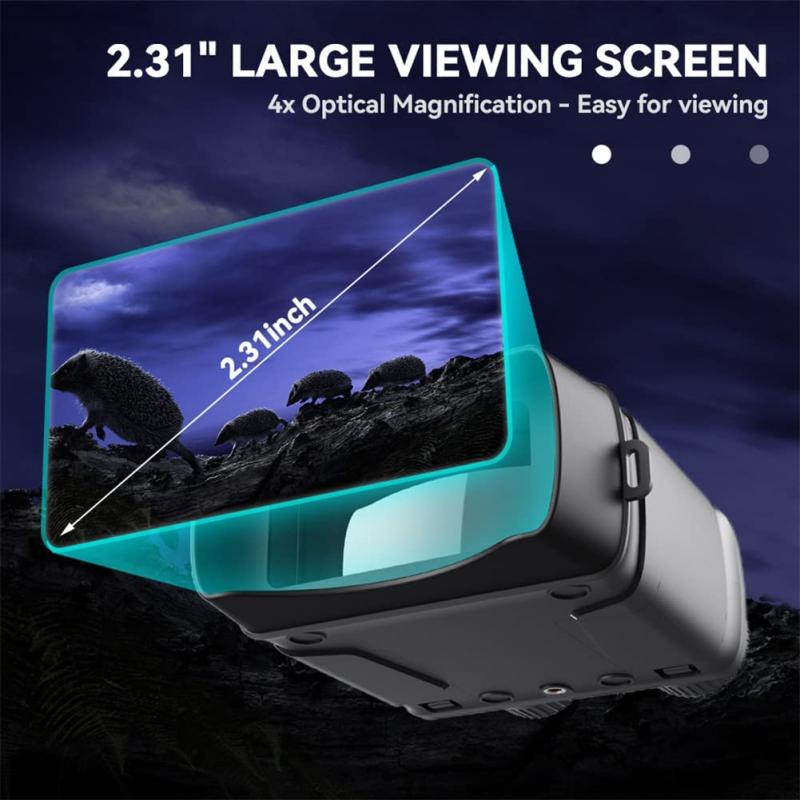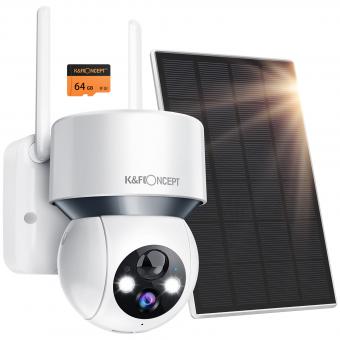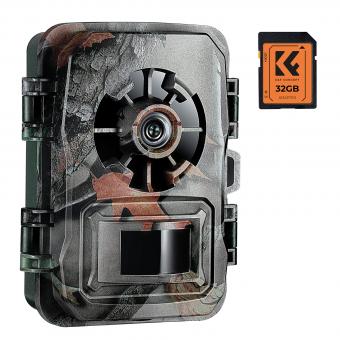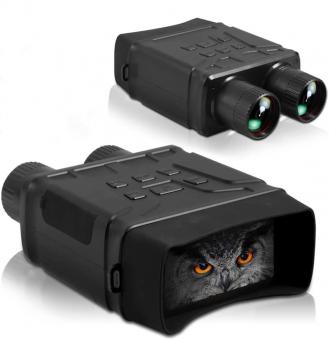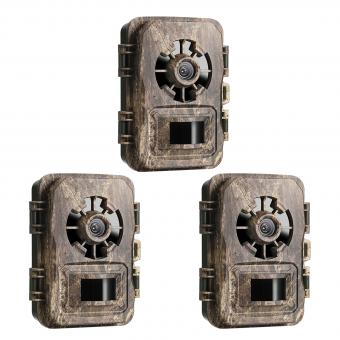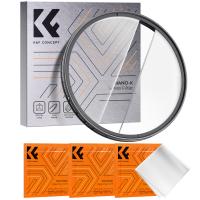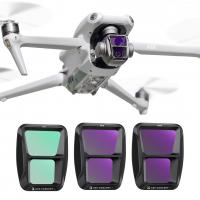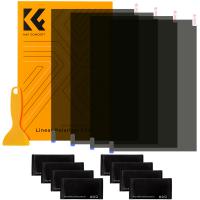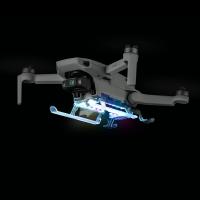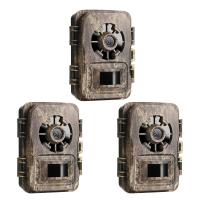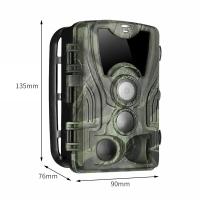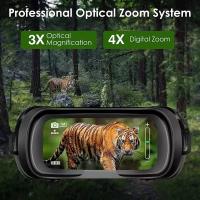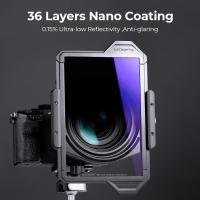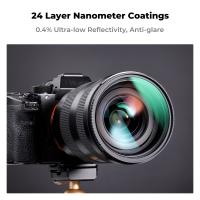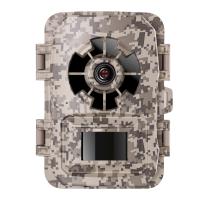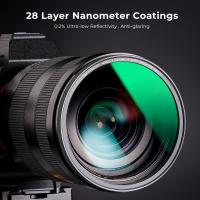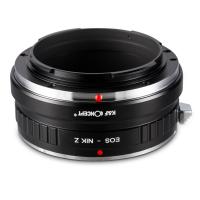Night Vision Goggles How Do They Work ?
Night vision goggles work by amplifying the available light in the environment, including infrared light that is not visible to the human eye. The goggles use an image intensifier tube to collect and amplify the light, which is then displayed on a screen in front of the user's eyes. The image intensifier tube contains a photocathode that converts the incoming light into electrons, which are then accelerated and focused by an electric field. The electrons strike a phosphor screen, producing a visible image that is magnified and displayed to the user. Some night vision goggles also use thermal imaging technology to detect heat signatures, which can be useful in detecting living beings or other sources of heat in the dark.
1、 Image intensification
Night vision goggles work through a process called image intensification. This process involves capturing any available light, including infrared light, and amplifying it to create a visible image. The goggles use a combination of lenses, photocathodes, and image intensifier tubes to achieve this.
The lenses in the goggles gather any available light and focus it onto the photocathode, which is a specialized surface that emits electrons when exposed to light. These electrons are then accelerated towards a phosphor screen by an electric field, causing the screen to emit light that corresponds to the original image.
The image intensifier tube is the key component of the goggles, as it amplifies the light signal by a factor of thousands. The tube contains a series of electrodes and a microchannel plate, which is a thin glass disk with millions of tiny holes. When the electrons from the photocathode strike the microchannel plate, they are multiplied by a process called secondary emission. This creates a much brighter image that is visible through the eyepiece of the goggles.
Recent advancements in night vision technology have focused on improving the resolution and clarity of the images produced by the goggles. This has been achieved through the use of digital image processing techniques, such as image enhancement and noise reduction. Additionally, some newer night vision goggles incorporate thermal imaging technology, which detects the heat signatures of objects rather than relying solely on available light.
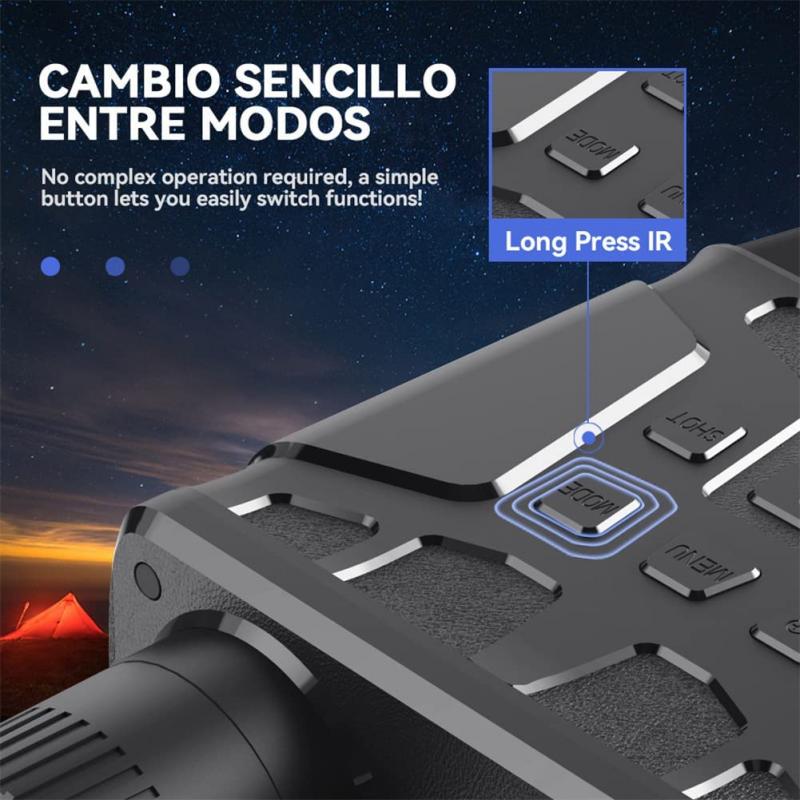
2、 Thermal imaging
Night vision goggles work by amplifying the available light in the environment, including moonlight and starlight, and converting it into visible light that the human eye can see. This is achieved through the use of an image intensifier tube, which captures the available light and converts it into electrons. These electrons are then accelerated and amplified, creating a brighter and clearer image that can be seen through the goggles.
The latest night vision goggles use digital technology to enhance the image quality and provide a more detailed view of the environment. They also have the ability to record and transmit the images, making them useful for surveillance and military operations.
On the other hand, thermal imaging works by detecting the heat emitted by objects in the environment. This is achieved through the use of a thermal camera, which captures the infrared radiation emitted by objects and converts it into an image that can be seen by the human eye. Thermal imaging is particularly useful in low-light conditions, as it does not rely on visible light to create an image.
The latest thermal imaging technology uses advanced algorithms and machine learning to enhance the image quality and provide more accurate temperature readings. This makes it useful for a wide range of applications, including search and rescue, surveillance, and industrial inspections.
In conclusion, both night vision goggles and thermal imaging have their own unique advantages and applications. While night vision goggles are useful for amplifying available light, thermal imaging is useful for detecting heat emissions. The latest advancements in technology have made both of these technologies more effective and versatile than ever before.

3、 Near-infrared illumination
Night vision goggles work by amplifying the available light in low-light conditions, such as moonlight or starlight, and converting it into visible light. This is achieved through the use of image intensifier tubes, which are sensitive to light in the near-infrared spectrum.
When light enters the goggles, it passes through a lens and is focused onto a photocathode. The photocathode converts the photons of light into electrons, which are then accelerated by an electric field towards a phosphor screen. The electrons collide with the phosphor screen, causing it to emit light that is visible to the user.
In addition to amplifying available light, night vision goggles can also use near-infrared illumination to enhance visibility in complete darkness. Near-infrared illumination is a technique that involves emitting light in the near-infrared spectrum, which is invisible to the naked eye but can be detected by the image intensifier tubes in the goggles. This allows the user to see in complete darkness, as the near-infrared light is reflected off objects and back into the goggles.
Recent advancements in night vision technology have led to the development of digital night vision goggles, which use digital sensors to capture and enhance images in low-light conditions. These goggles can also incorporate features such as thermal imaging, which detects heat signatures and can be used to locate people or animals in complete darkness.
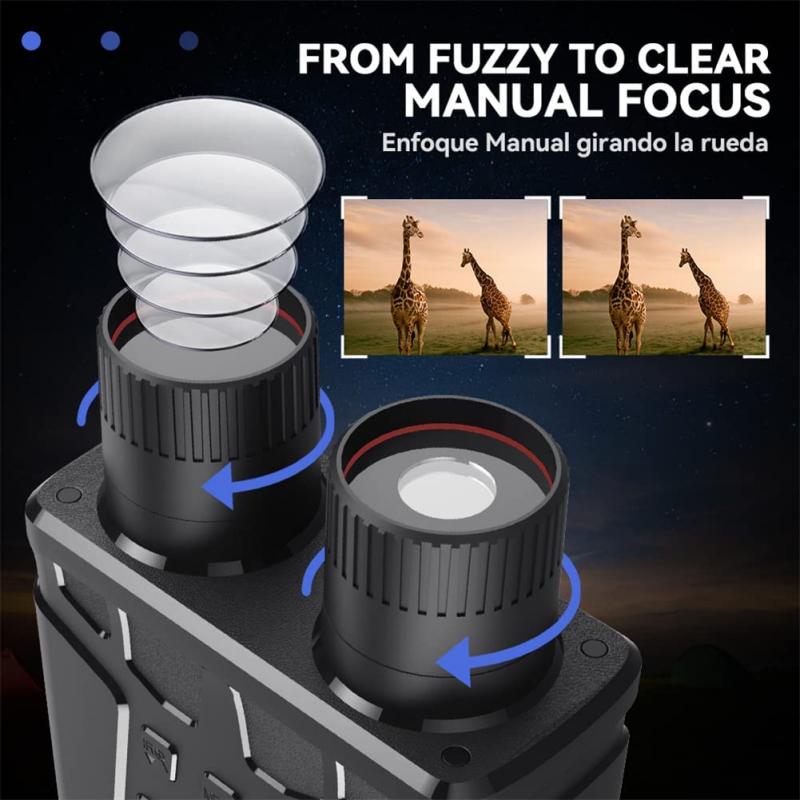
4、 Active illumination
Night vision goggles work by amplifying the available light in the environment, including infrared light, to create a visible image. This process is known as active illumination. The goggles use a combination of lenses, sensors, and image intensifiers to capture and amplify the light.
The lenses in the goggles gather the available light and focus it onto a photocathode, which converts the light into electrons. These electrons are then accelerated and focused by an electric field onto a phosphor screen, which emits visible light that is then viewed through the eyepiece.
In addition to amplifying available light, some night vision goggles also emit their own infrared light, which is invisible to the human eye but can be detected by the goggles. This allows the goggles to see in complete darkness, as long as there is some infrared light present.
Recent advancements in night vision technology have led to the development of digital night vision goggles, which use digital sensors and processors to capture and enhance images. These goggles can provide higher resolution and better image quality than traditional analog night vision goggles.
Overall, night vision goggles are an essential tool for military and law enforcement personnel, as well as hunters and outdoor enthusiasts who need to navigate in low-light conditions.
